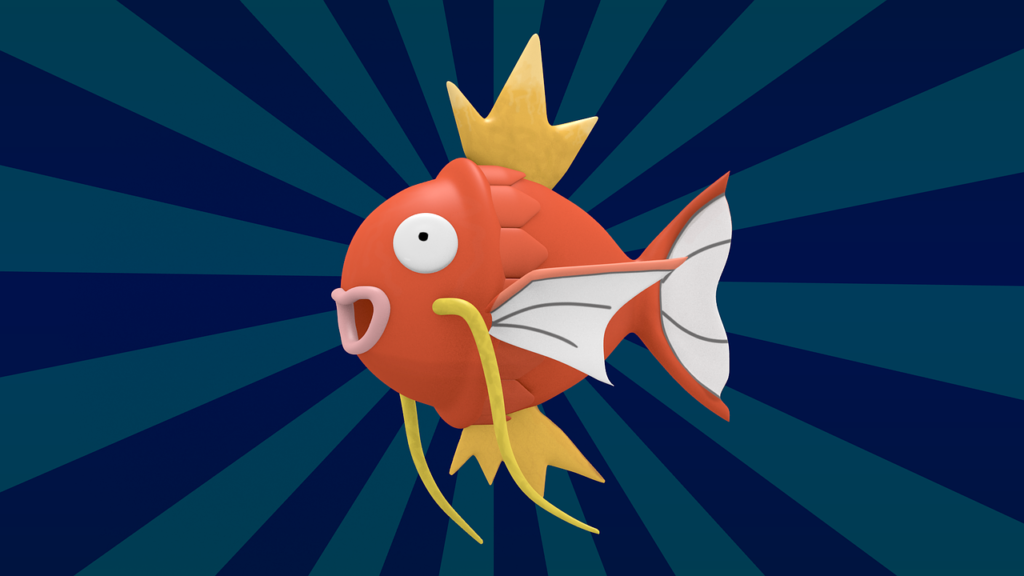For decades, Pokémon has been one of the most successful game franchises with its colorful world, adorable (and sometimes fierce!) creatures, and addictive gameplay. But one question that keeps popping up among fans and gamers is: what genre does it actually belong to? Is Pokémon a JRPG like the legendary Final Fantasy series, or does it stand in a category of its own?
Throughout this article, you’ll learn the core features of JRPGs, how Pokémon stacks up against them, and analyze whether this awesome franchise fits the JRPG mold, once and for all!
You may also like: Exploring the main types of games – concepts and examples
Before we catch ‘em all: what makes a JRPG? Is Pokémon a JRPG as well?
First things first, let’s explore what it means to be a JRPG. The term, which stands for Japanese Role-Playing Games, refers to titles with special ingredients that set them apart from your typical Western RPGs or MMORPGs.
One of the main ingredients in a JRPG is turn-based combat, much like Ankama’s Dofus (2004) and Wakfu (2012). This is different from most Western RPGs and MMORPGs as, in these games, battles happen in real-time, and you need to have lightning-fast reflexes to dodge attacks and land your own blows.

Another key ingredient is a focus on story and character development. JRPGs often have epic storylines that unfold like a novel, with memorable characters who grow and change throughout their journey. You’ll laugh with them, cry with them, and cheer them on as they overcome challenges and save the world (or maybe even the universe!).
Of course, no JRPG is complete without a healthy dose of leveling up and grinding. Just like training your Pokémon to become stronger, JRPG characters gain experience points from battles, which allows them to level up and learn new skills.
This often involves some grinding – which means fighting lots of battles to gain enough experience points to progress. It might sound tedious, but the feeling of finally defeating a tough boss after hours of grinding is super satisfying. We recognize it’s not for everyone, though.
Finally, JRPGs usually feature vast and immersive worlds to explore. From sprawling cities to mysterious dungeons and enchanted forests, there’s always something new to discover around every corner. And just like in Pokémon, exploration is often rewarded with hidden treasures, secret areas, and encounters with unique characters.
Examples of popular JRPGs
With that out of the way, let’s quickly explore some of the best JRPG titles and franchises of all time:
- Final Fantasy: this iconic series needs no introduction. With its epic stories, memorable characters, and innovative gameplay, Final Fantasy has been a cornerstone of the JRPG genre for decades. Each game offers a unique world to explore and an amazing story to go with it;
- Dragon Quest: another legendary JRPG series, considered by many the first true JRPG, Dragon Quest is known for its charming characters, classic turn-based combat, and lighthearted stories. It’s like the friendly and approachable cousin of Final Fantasy, perfect for both JRPG veterans and newcomers;
- Persona: this series blends elements of JRPGs with social simulation, where you spend your days attending school, building relationships, and exploring dungeons. The franchise also tackles mature themes and offers complex characters, making for a truly unique and engaging experience;
- Chrono Trigger: this time-traveling classic is beloved for its then-innovative gameplay, multiple endings, and unforgettable story. It’s like a JRPG version of Back to the Future, with memorable characters and a plot that will keep you hooked until the very end.

Is Pokémon a JRPG that fits the model?
Alright, we’ve explored the world of JRPGs – now it’s time to see if Pokémon can hold its own in the turn-based arena. Is Pokémon a JRPG or not? Let’s begin by analyzing how one of the most beloved game franchises stacks up against the classic JRPG features we saw a while ago.
First up, combat: Pokémon battles are the epitome of turn-based strategy. Just like in a traditional JRPG, you and your opponent take turns choosing your moves – whether it’s a powerful attack, a status effect, or a sneaky swap to gain a type advantage. This strategic element is a core part of both Pokémon and JRPGs, making battles a test of skill and planning, with a bit of luck involved as well.
Next, let’s talk about character development. While Pokémon trainers might not have the complex backstories of some JRPG heroes, they still grow and evolve throughout their journeys. Trainers start as rookies and gradually become Pokémon masters, learning new strategies, “forming bonds” with their Pokémon and fellow travel companions, and overcoming challenges along the way.
Leveling up and grinding? Oh yeah, Pokémon doesn’t fall short either! Catching and training your Pokémon to reach their full potential is a core part of the game. Just like in a JRPG, you’ll spend hours battling wild Pokémon and other trainers to gain experience points, level up your team, and learn powerful new moves. It’s a satisfying gameplay loop that keeps players engaged and invested in their Pokémon’s growth.

Now let’s talk about story and worldbuilding. While Pokémon might not have the complex narratives of some JRPGs, each generation introduces us to a new region with its unique lore, environments, and challenges. From the Kanto region’s iconic landscapes to the Alola region’s tropical islands, there’s a diverse range of worlds to explore, each with its secrets and stories to uncover.
However, Pokémon isn’t just a carbon copy of a JRPG – it brings some fresh ideas to the table too! The biggest game-changer is, of course, monster catching and evolution. Unlike traditional JRPGs where your party members are usually pre-determined characters, Pokémon lets you build your own team by catching and training a variety of creatures.
This adds a whole new layer of strategy and personalization to the game, as you need to consider type matchups, move sets, evolution paths, and min-maxing details (like Effort Values (EVs), Individual Values (IVs, or genetics), and natures) when building your dream team.
Another unique aspect of Pokémon is its focus on collecting and completing the Pokédex, as well as the existence of “shiny” creatures. This adds an extra layer of challenge and motivation for players who want to catch ’em all. It’s like a scavenger hunt within an RPG, encouraging exploration and engagement with the massive worlds of Pokémon games.
Verdict: is Pokémon a JRPG?

So, after examining the evidence, is Pokémon a JRPG? The answer is a resounding yes… with a minor twist! Pokémon shares the core features of JRPGs: turn-based combat, character development, leveling up, and a focus on exploration and story. These elements are undeniably present and contribute to the overall JRPG experience.
However, Pokémon also carves its own path with its unique monster-catching and evolution mechanics. This innovative approach to party building and character progression sets it apart from traditional JRPGs and creates a gameplay experience that feels both familiar and refreshingly new.
Ultimately, Pokémon is like a cousin of JRPGs. It shares a strong family resemblance but has its distinct personality and quirks. Whether you call it a JRPG or something else entirely, one thing is clear: Pokémon is a fantastic game that has brought fun to millions of gamers and continues to innovate with each new generation.
Looking for help with all things game development?
Whether you have a fully fleshed-out concept or just a glimmer of an idea for a game, we at Main Leaf are here to turn your vision into reality.
With over a decade of experience crafting truly incredible games for our clients, we’re the most affordable and best-prepared partner to bring your dream game to life. We can handle everything from concept development and art design to programming and implementation, using the latest technologies to create a game that stands out from the crowd. Contact us today for a free consultation and let’s get started building your upcoming masterpiece as soon as possible!

